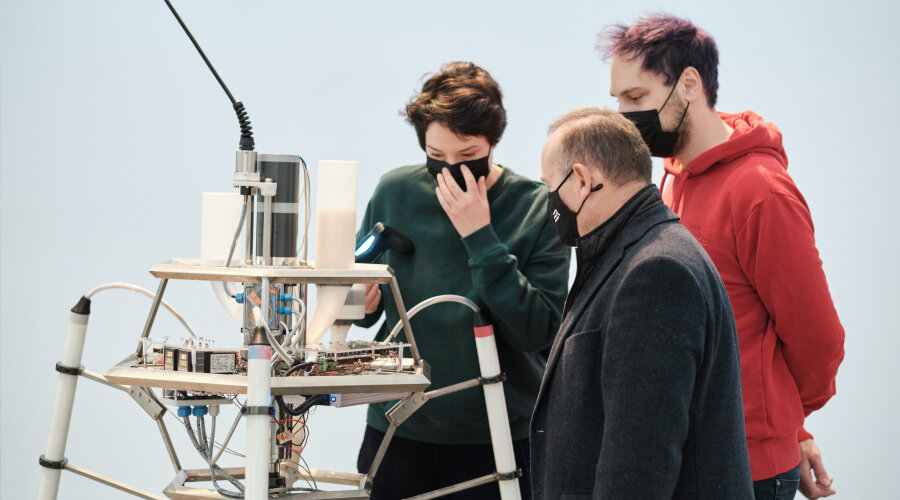At the beginning of the performative installation RE:PLACES, the space is already characterised by sculptures with expressive shapes and colours. On closer inspection, the objects show properties that seem atypical of their materiality – a massive piece of plastic that forms multicoloured, abstract structures and sometimes bubbles at the surface. The chunks, which consist of different types of plastic, originate from industrial production, where they arise as waste product of machine cleaning.
Moving through this scenery is a complex structure reminiscent of a planetary lander on three legs. In a branched funnel system, it transports different coloured granules made from plastic waste. The plastic material is heated and compressed in a cylindrical extruder in the centre of the robot and swells out as a colourful mass. The hot material curves and twists until it cools and solidifies into its final form. In creative processes lasting several minutes, the 1.70-metre-tall robot sheds the plastic objects and spreads them around the exhibition space like three-dimensional brush strokes.
The result is a variety of intertwined forms with glass-like surfaces and fascinating colour transitions – with material properties not usually associated with plastic. The visual and haptic experiences enable an intuitive and aesthetic approach to the thematic complex around plastic and its problematic use. This stimulates a new perspective on materiality intended to promote public discourse on plastics.
The title of the installation RE:PLACES is short for “Recycling PLA Closed-Circuit Extrusion Shaper”. The objects created during an exhibition can serve as raw material again, thus closing the cycle.
RE:PLACES was realised within the framework of the European Media Art Platform EMARE programme at FACT (Liverpool, UK), with support of the Creative Europe programme of the European Union. Supported by the European Art-Science-Technology Network for Digital Creativity.


















